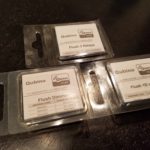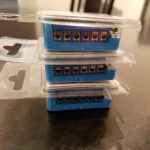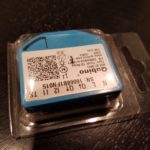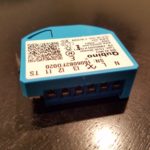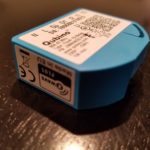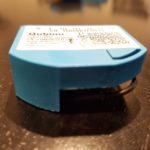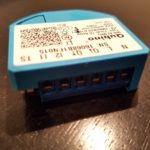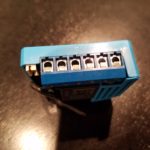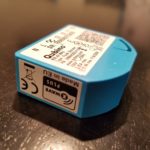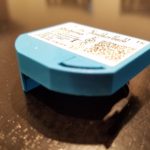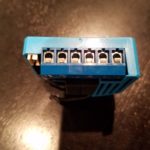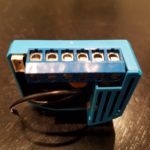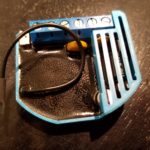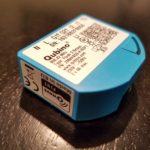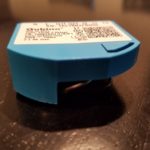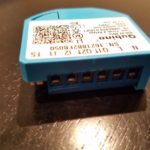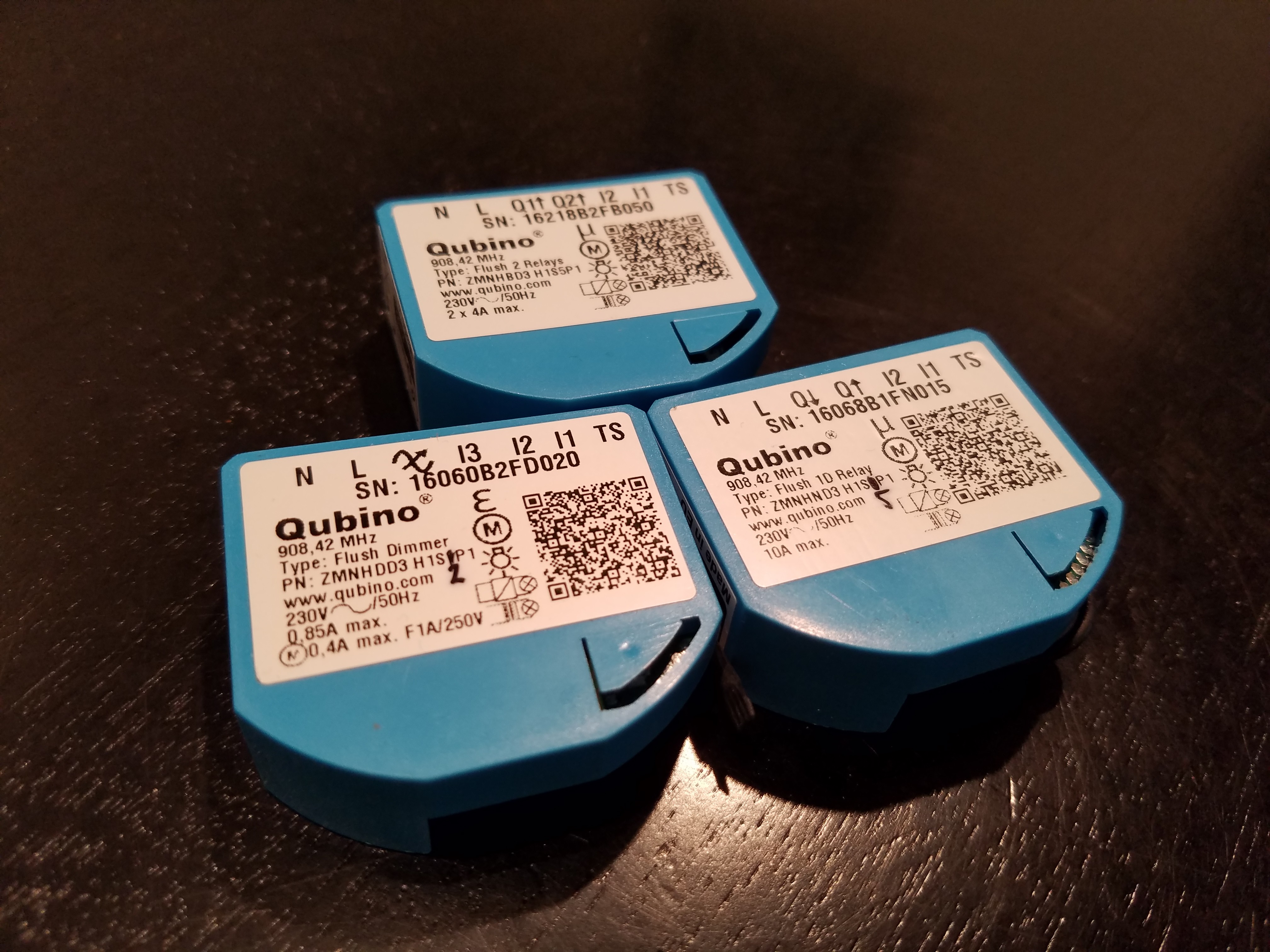
I have recently received three in-wall Z-Wave devices made by Qubino. Qubino has been making Z-wave products for the European market for a few years and has recently started releasing devices for the US Market. Even with the Z-wave Alliance having more than 450 companies participating in the technology’s growth, it is great for consumers to have even more choices. From the spec sheets, these devices seem extremely capable with plenty of options to fine tune them to fit your needs. With in-wall relays and dimmers from several companies now (Fibaro, Aeon, Enerwave, etc.) how do these stack up?
Flush Relay 1D
As this is a rather unique device, it was the first one that I wanted to put through it’s paces. The only other dry contact Z-Wave device that I have experience with is the Remotec ZFM-80. The main difference here is that this device is meant to be installed behind a switch. Qubino advertises its line of in-wall devices as “flush” because of the fact that their flat sides allow them to sit flush in your switch box. The 1D is extremely small and well built. While I can’t backup their claim that it is the smallest in the world, I can say that it is on the smaller end compared to the Fibaro and even the new Aeon nano devices. The wire inputs are solid, with terminals for two switches. These input switches can be configured as either momentary or toggle type or can even be configured to connect to a normally open (NO) or normally closed (NC) contact (or other binary) sensor. These options really open the door for smart home creativity. I’ll leave it up to the readers to come up with the really fun ideas, but the 1D could make a great garage door opener (which is what I used the Remotec for). Since it is dry contact, the possibilities are endless. Connect anything that is within the AC or DC power ratings of the device into the input and the other side of the wire into the output and you have instant remote control and automation through your Z-Wave network!
Along with its solid construction, the 1D has several options to configure it to your specific needs. You can set the switch to automatically turn on or off after x number of seconds or milliseconds (seconds or milliseconds configurable as well). You can even enable both and have the switch turn on and off in an endless loop. I tested this with 10 seconds on and 10 seconds off. Maybe not very practical, but it was fun to see in action. The device also allows you to save its state when losing power, specify the output switch type (NO or NC), and it has some configuration options for an optional temperature sensor.
Flush 2 Relays
I’ve used a lot of dual relay devices over the years. From the likes of Fibaro, Aeon, Philio, Enerwave, and Monoprice. As with the 1D, this is a well built device. Extremely small and durable, which is important when trying to shove these things behind your wall switches. Also as with the 1D, Z-Wave communication with the Flush 2 is fast and reliable.
Unlike the 1D the Flush 2 reports power measurements. The frequency of the reports is configurable by percentage and/or time. I appreciate the power monitoring capability, but how useful this will be depends on your gateway. For SmartThings (which currently is my preferred gateway), there are a few automations you can configure to trigger on energy status. If you want a visual timeline of power consumption, you have to send the data to an external system. I have used Bridgely and logstash for this, but they do require a bit of work (plus, I believe Bridgely no longer offers this type of service to consumers). One thing to take note of is that the Qubino devices do not report cumulative energy (kWh) like most other energy monitoring smart devices. Correction: it appears that the Dimmer and 2 Relays do support cumulative energy (kWh).
As for configuration, the Qubino shares most of the options that the 1D has (except for 2 relays instead of 1). The most notable exception are the options for power reporting. You can configure the switch to send power reports when power consumption changes by a certain percentage or when a certain amount of time has elapsed.
Overall, this is one of my (if not the) favorite dual relay device. It is well built, can be purchased for a decent price, and has the most common configuration options that a user would need.
Flush Dimmer
Lastly we have the Qubino Flush Dimmer. If you remember my review of the Fibaro Dimmer 2, I was quite a big fan of that device. So, how does the Qubino compare?
First off, I prefer the physical design and size of the Qubino better. I like that it is flat (where the Fibaro is a little sloped on one side) as well as the “flat head” screw terminals. They just seem more solid to me.
Performance is similar between the two. The Qubino seems snappy and responsive with dimming being smooth and consistent. The question with all dimmers though is the bulbs. The device works best with incandescent bulbs (of course), but is advertised as being compatible with dimmable CFL and LED bulbs. My experience with the latter two is usually a mixed bag (depending on the dimmer and the bulb). I tested this device with 2 different dimmable CFL bulbs as well as 2 dimmable LEDs. They both performed well, with no flickering or buzzing. I’m still on a search for my favorite dimmable LED, but these ones sufficed, and the Qubino didn’t let me down.
If your bulbs do flicker, Qubino recommends that you adjust parameter 60 (minimum dimming value) to at least 30(%). Of course, this reduces the dimming range of the bulb, but will stop the flickering that sometimes happens when using certain brands of lights.
Most of the configuration options that you see with the Flush 2 Relays and Flush 1D are included in the dimmer. Some dimmer specific parameters do exist such as minimum dimming value (mentioned above), maximum dimming value, dimming time, and dimming duration. Qubino has really seemed to include the more useful configuration options, and I feel that these will do it for most people.
Conclusion
Qubino has done a fantastic job on all three of these devices. They are a little cheaper than some of their competitors, but still have an amazing design and most of the configuration options you would need. There are plenty of applications for these devices, and because they are Z-Wave, they should connect up to your network and work with all your other Z-Wave devices (depending on your gateway of course).
Speaking of gateways, I have created 3 device handlers for these devices to work with the SmartThings ecosystem. I put great detail into these handlers and tested them thoroughly, but let me know if there are any issues. The handlers support all functions of the switches, all configuration parameters, energy monitoring, instant status updates, and more. With the dual relay make sure you use my Virtual Device Sync application to allow SmartThings to use both relays in automations and routines!
Where to Buy
All of these devices can be purchased from thesmartesthouse.com. My favorite Z-Wave product store. Act now and receive 10% off with the coupon code “QUBINO10”!
SmartThings Device Handlers
Qubino Flush 1D Relay
Qubino Flush Dimmer
Qubino Flush 2 Relays

